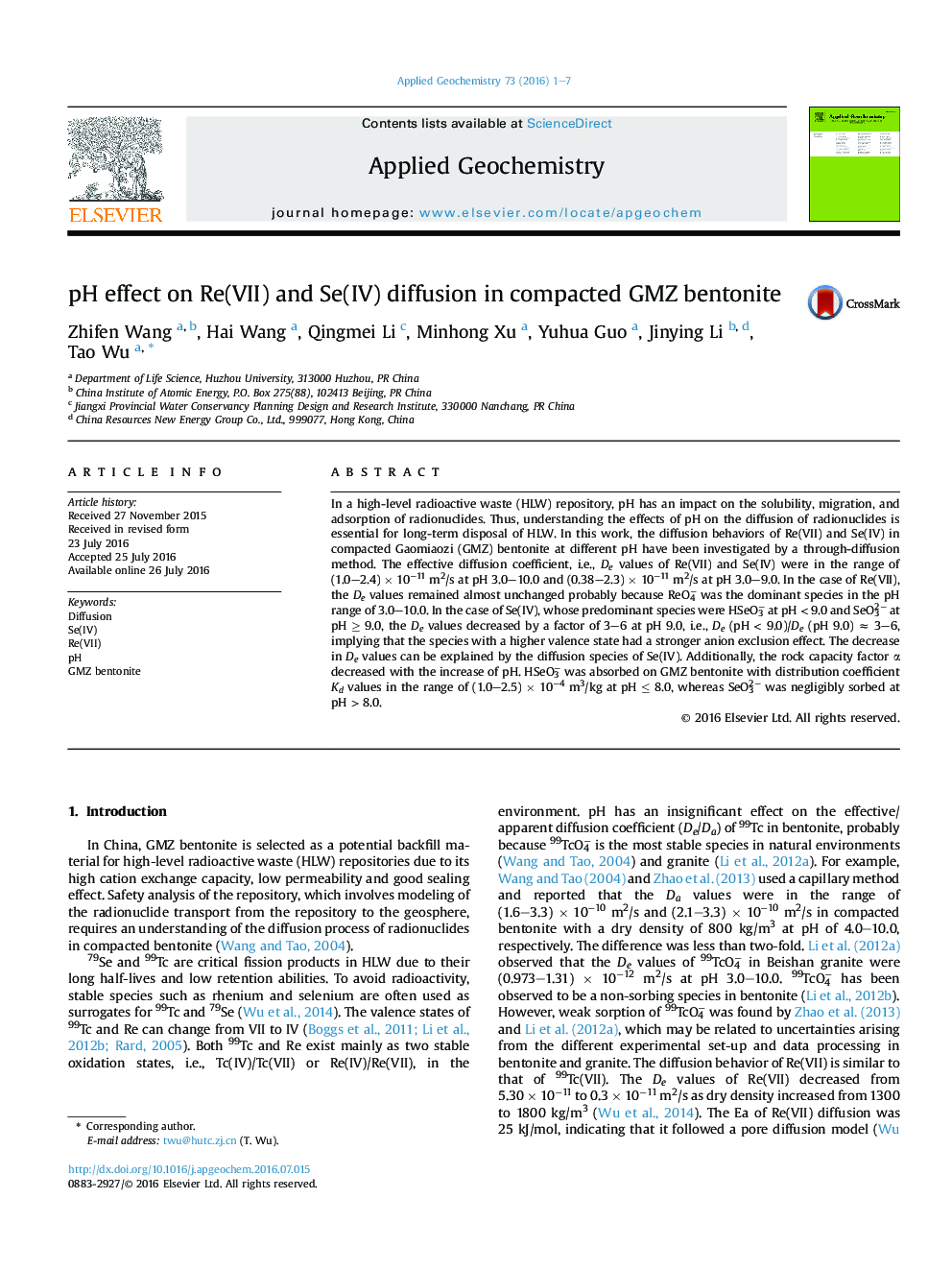| Article ID | Journal | Published Year | Pages | File Type |
|---|---|---|---|---|
| 4435532 | Applied Geochemistry | 2016 | 7 Pages |
•The De values of Re(VII) in GMZ bentonite were (1.0–2.4) × 10−11 m2/s.•The De values of Se(IV) were (0.38–2.3) × 10−11 m2/s at pH 3.0–9.0.•The De values of ReO4− were almost unchanged at pH 3.0–10.0•The De values of HSeO3− were 3–6 times higher than that of SeO32−.•The Kd values of HSeO3− were (1.0–2.5) × 10−4 m3/kg.
In a high-level radioactive waste (HLW) repository, pH has an impact on the solubility, migration, and adsorption of radionuclides. Thus, understanding the effects of pH on the diffusion of radionuclides is essential for long-term disposal of HLW. In this work, the diffusion behaviors of Re(VII) and Se(IV) in compacted Gaomiaozi (GMZ) bentonite at different pH have been investigated by a through-diffusion method. The effective diffusion coefficient, i.e., De values of Re(VII) and Se(IV) were in the range of (1.0–2.4) × 10−11 m2/s at pH 3.0–10.0 and (0.38–2.3) × 10−11 m2/s at pH 3.0–9.0. In the case of Re(VII), the De values remained almost unchanged probably because ReO4− was the dominant species in the pH range of 3.0–10.0. In the case of Se(IV), whose predominant species were HSeO3− at pH < 9.0 and SeO32− at pH ≥ 9.0, the De values decreased by a factor of 3–6 at pH 9.0, i.e., De (pH < 9.0)/De (pH 9.0) ≈ 3–6, implying that the species with a higher valence state had a stronger anion exclusion effect. The decrease in De values can be explained by the diffusion species of Se(IV). Additionally, the rock capacity factor α decreased with the increase of pH. HSeO3− was absorbed on GMZ bentonite with distribution coefficient Kd values in the range of (1.0–2.5) × 10−4 m3/kg at pH ≤ 8.0, whereas SeO32− was negligibly sorbed at pH > 8.0.
